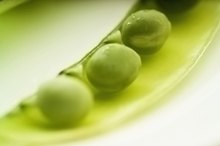What does fact checked mean?
At Healthfully, we strive to deliver objective content that is accurate and up-to-date. Our team periodically reviews articles in order to ensure content quality. The sources cited below consist of evidence from peer-reviewed journals, prominent medical organizations, academic associations, and government data.
- “Journal of Rheumatology”; Treatment of Fibromyalgia Syndrome with Super Malic: A Randomized, Double Blind, Placebo Controlled, Crossover Pilot Study; I.J. Russell et al; 1995
- “Journal of Rheumatology”; Treatment of Fibromyalgia Syndrome with Super Malic: A Randomized, Double Blind, Placebo Controlled, Crossover Pilot Study; I.J. Russell et al; 1995
- “British Journal of Sports Medicine”; Citrulline/Malate Promotes Aerobic Energy Production in Human Exercising Muscle; D. Bendahan et al.; 2002
- “British Journal of Sports Medicine”; Citrulline/Malate Promotes Aerobic Energy Production in Human Exercising Muscle; D. Bendahan et al.; 2002
The information contained on this site is for informational purposes only, and should not be used as a substitute for the advice of a professional health care provider. Please check with the appropriate physician regarding health questions and concerns. Although we strive to deliver accurate and up-to-date information, no guarantee to that effect is made.
Malate Vs. Malic Acid
Malic acid is naturally found in many tart or sour-tasting foods, such as apples, pears, tomatoes and cherries. Malic acid bound to ions or salts are known as malates. Malic acid in this form may enhance the effect of certain minerals in pharmaceuticals used to decrease fatigue, provide relief from fibromyalgia and protect the kidneys, liver and heart. Malates also play an important role in the cell’s energy-producing cycle in the body.
Identification
Malic acid is a colorless, crystalline compound that has two forms: l-malic, the natural and biologically active isomer contained in food, and d-malic, which is produced by some micro-organisms or made chemically. Responsible for the sour taste of unripe fruits, malic acid is used in the aging of wine and as an additive in hard candies and low-calorie beverages, cider and apple drinks because it keeps the natural color of juice.
Malates are negatively charged ions that combine with malic acid. The malate anion plays a key role in the citric acid, or Krebs, cycle, which is a series of metabolic reactions in organisms that produce high-energy phosphate compounds. Malic acid, produced as malates using various minerals such as magnesium, calcium and citrulline, can enhance pharmaceutical stability and improve absorption.
- Malic acid is a colorless, crystalline compound that has two forms: l-malic, the natural and biologically active isomer contained in food, and d-malic, which is produced by some micro-organisms or made chemically.
- The malate anion plays a key role in the citric acid, or Krebs, cycle, which is a series of metabolic reactions in organisms that produce high-energy phosphate compounds.
Magnesium Malate
Creatine & Joint Pain
Learn More
When a magnesium ion is attached to a malic acid molecule, the result is magnesium malate. Magnesium malate provides the benefits of a highly absorbable form of magnesium as well as malic acid in the possible treatment and pain relief associated with fibromyalgia. The University of Texas Health Science Center in San Antonio conducted a study to establish the effect of malic acid and magnesium on 24 patients with fibromyalgia. Conclusions, published in the Journal of Rheumatology, suggested that a high dose of malic acid and magnesium may improve pain and tenderness associated with fibromyalgia when taken for at least two months.
- When a magnesium ion is attached to a malic acid molecule, the result is magnesium malate.
- The University of Texas Health Science Center in San Antonio conducted a study to establish the effect of malic acid and magnesium on 24 patients with fibromyalgia.
Citrulline Malate
The rind of watermelon is a good source of citrulline. Citrulline, in the form of citrulline malate, may aid in enhanced performance for athletes due to its effect of reducing muscle fatigue. French researchers from Marseille studied the effects of citruilline malate on energy production in human exercising muscle 2. Among 18 men, those that were given citrulline malate showed a significant reduction in fatigue and had an increased synthesis of energy-producing enzymes for quicker recovery after exercise. The conclusion, published in the British Journal of Sports Medicine in 2002, was that treatment of citrulline malate promotes energy production 2.
Calcium Malate
Magnesium and Blood Clots
Learn More
Calcium malate is malic acid with calcium. Calcium malate enhances the absorption potential of calcium as compared to inorganic forms of calcium. Scientific studies by the Panel on Food Additives, Flavourings, Processing Aids and Materials in Contact with Food concluded that calcium citrate malate was a safe and bioavailable source of calcium in foods and supplements, according to the European Food Safety Authority.
Related Articles
References
- “Journal of Rheumatology”; Treatment of Fibromyalgia Syndrome with Super Malic: A Randomized, Double Blind, Placebo Controlled, Crossover Pilot Study; I.J. Russell et al; 1995
- “British Journal of Sports Medicine”; Citrulline/Malate Promotes Aerobic Energy Production in Human Exercising Muscle; D. Bendahan et al.; 2002
- Taylor MB, Yanaki JS, Draper DO, Shurtz JC, Coglianese M. Successful short-term and long-term treatment of melasma and postinflammatory hyperpigmentation using vitamin C with a full-face iontophoresis mask and a mandelic/malic acid skin care regimen. J Drugs Dermatol. 2013 Jan;12(1):45-50.
- Tyka AK, Chwastowski M, Cison T, et al. Effect of creatine malate supplementation on physical performance, body composition and selected hormone levels in spinters and long-distance runners. Acta Physiol Hung. 2015 Mar;102(1):114-22. doi:10.1556/APhysiol.102.2015.1.12
- Rodgers AL, Webber D, de Charmoy R, Jackson GE, Ravenscroft N. Malic acid supplementation increases urinary citrate excretion and urinary pH: implications for the potential treatment of calcium oxalate stone disease. J Endourol. 2014 Feb;28(2):229-36. doi:10.1089/end.2013.0477
- Manfredini R, De giorgi A, Storari A, Fabbian F. Pears and renal stones: possible weapon for prevention? A comprehensive narrative review. Eur Rev Med Pharmacol Sci. 2016;20(3):414-25.
- Russell IJ, Michalek JE, Flechas JD, Abraham GE. Treatment of fibromyalgia syndrome with Super Malic: a randomized, double blind, placebo controlled, crossover pilot study. J Rheumatol. 1995;22(5):953-8.
- Gómez-Moreno G, Aguilar-Salvatierra A, Guardia J, et al. The efficacy of a topical sialogogue spray containing 1% malic acid in patients with antidepressant-induced dry mouth: a double-blind, randomized clinical trial. Depress Anxiety. 2013 Feb;30(2):137-42. doi:10.1002/da.22017
- Tang SC, Yang JH. Dual Effects of Alpha-Hydroxy Acids on the Skin. Molecules. 2018;23(4). doi:10.3390/molecules23040863
Writer Bio
Gord Kerr's professional background is primarily in business and management consulting. In 1991, Kerr started writing freelance for a small local newspaper, "The Summerland Review," and a leading sailing publication, "Cruising World Magazine." Kerr has a Bachelor of Business Administration degree from Wilfred Laurier University.









